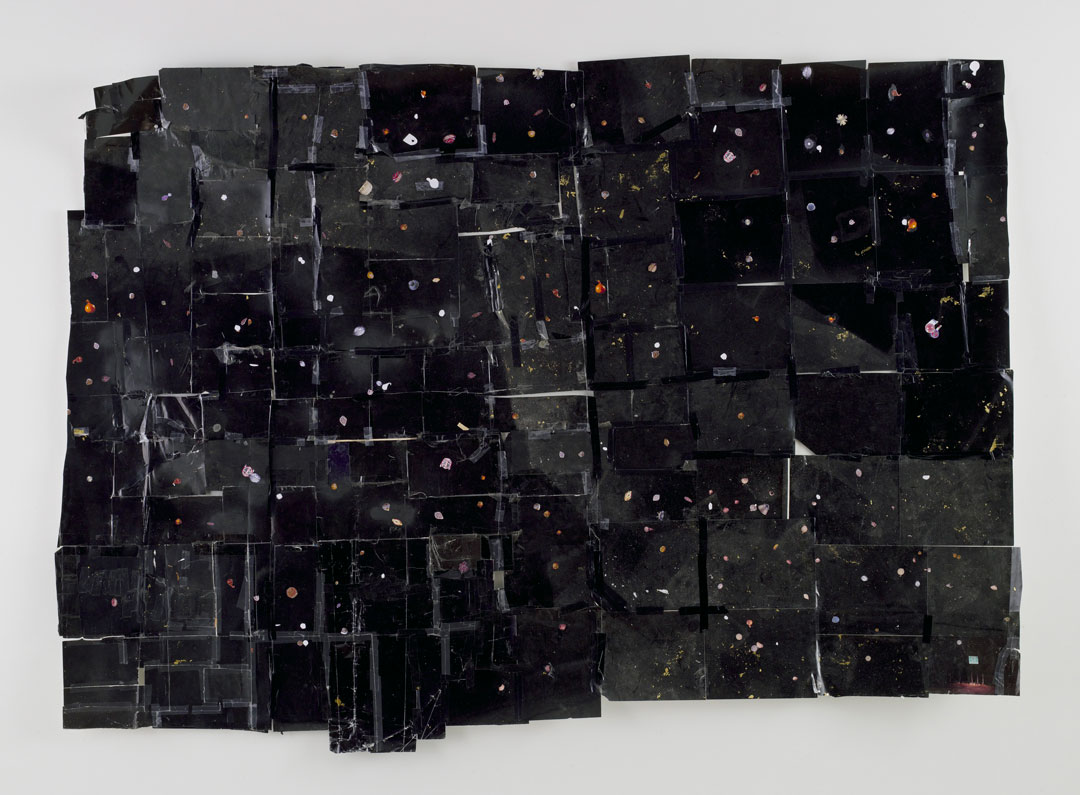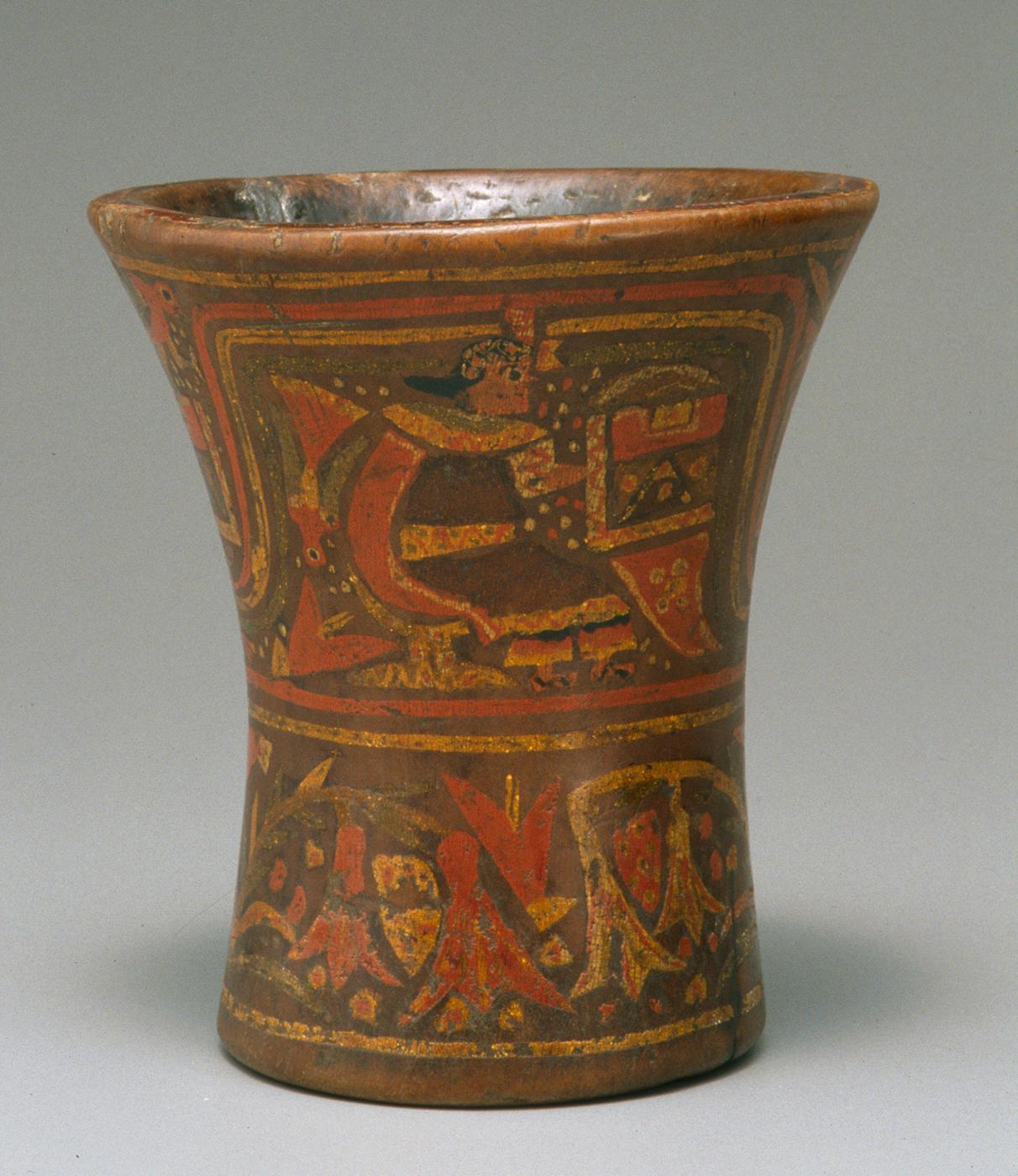Object of the Week: untitled (cosmos)
As the first official week of summer comes to a close, a palpable shift has taken place. With longer days and later nights, more time is already spent outdoors, whether on a porch, patio, or campground. Personally, summer often equates with more time spent looking at the night sky, along with a whole host of other associations—certain smells, foods, activities, and feelings.
In untitled (cosmos) by William Cordova, a fragmented expanse of black space is peppered with stars and planets, evoking the universe. Closer inspection reveals that among these celestial bodies are also archaeological artifacts and other suspended objects. Functioning then as a fictional astronomical and astrological map, it references the relationship that ancient cultures, such as the Inca, had with the cosmos—determining, or at least heavily informing, human events and actions.
Like the act of observing the night sky, the fragility and fugitive nature of this photographic map—held together by mere electrical and scotch tape—serves to remind us of our own ephemerality, and perhaps even make space for the contemplation of time and space, spirituality and identity.
Born in Lima, Peru, Cordova moved to Miami at an early age. He later lived in Houston, Chicago, and New York, but Peruvian cosmology, Andean architecture, and his personal history continued—and continue—to inform his work. Often working with found and discarded materials, Cordova’s varied and multimedia practice also means to address the economies of certain materials and objects, “challenging the functionality of art as a purely aesthetic pursuit.”[1]
– Elisabeth Smith, SAM Collection & Provenance Associate

